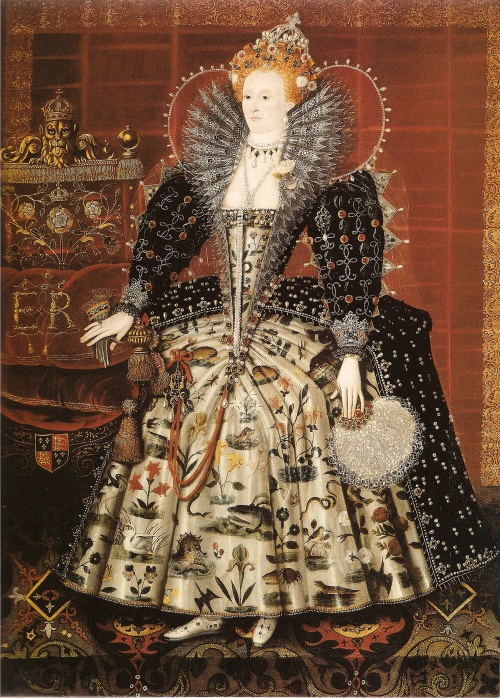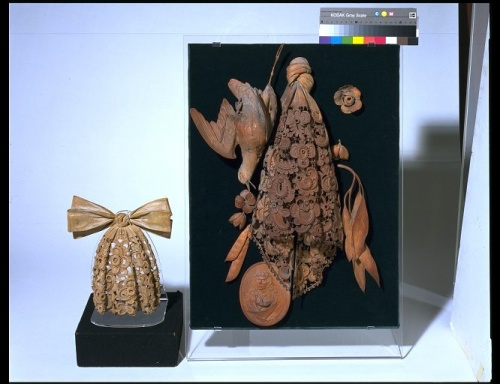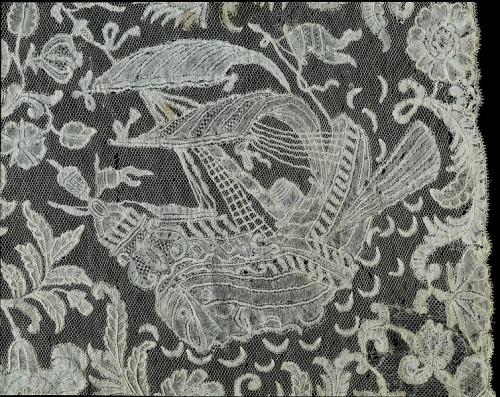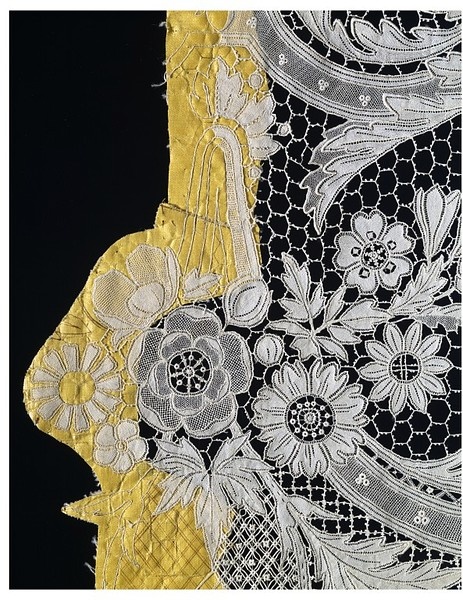Oh lace, lace... (90 works)
Разрешение картинок от 737x224px до 4856x7613px
Handmade lace has always been very expensive.
People went broke making lace, got into debt because of it, went to prison and committed suicide. According to official documents, the aristocracy and the church spent enormous sums on lace.
The origin of lace dates back to very ancient times. The legendary book of Exodus mentions “a curtain of blue, purple, and scarlet wool and fine woven linen” (chap. XXVI-XXVII) and “Aaron’s robe of gold, blue, purple, and scarlet wool and woven linen.” Lace has been a favorite decoration since time immemorial, but its heyday is associated with the costume of the 16th century.
Threads for lace could be paper, linen, wool, silk, silver, gold. In Italy they even used threads made from aloe.
The lace was woven or sewn. Braided lace was made on a round pillow using bobbins. The pattern or splinter was placed on the pillow, and the weaver (lacemaker), having strengthened the ends of the threads with pins, stuck the pins into the nearest lines of intersection of the pattern and threw the bobbins over each other, reaching the crossing of the threads braiding the pins, then took out the previously stuck ones and stuck them in new places following the pattern.
Sewn lace was made with a needle and thread. The design was applied to parchment, the lacemaker basted a thick thread along the lines of the design, then sewed ornaments, filled the middles, sewed in bundles of tulle and sewed on relief contours. Using scissors, I cut the basting connecting the lace and parchment, and the work was ready.
Italian artists of the 16th century created about twenty-two books with patterns for lace products. The names of their authors are known: Niccolo Zoppino (1527), Bugato (1527), Paganino (1527), Tagliente (1534) and others. In Italy, the lacemakers of Venice, Genoa, Albissola, and Milan were famous for their skills. From the end of the 15th century, Venetian lace “stitch in the air” became famous, which was a narrow jagged edge of a rare geometric pattern. Gradually, the geometric pattern became more complicated with figures of people and animals. Lush and complex embroidered guipures were woven with a needle and linen threads, and variegated, colored, gold and silver laces were created using bobbins.
Flanders was no less famous than Italy for its lace. Here they made woven guipures with ornaments from plant curls, for the production of which in damp basements, so that the tow was constantly wet, the craftswomen spun surprisingly soft and thin threads from flax.
The name of the famous thin Flemish Brussels guipure “Angleterre guipure” is explained by political and economic reasons. In England, until 1735, there remained a ban and restrictions on wearing foreign-made lace. In 1662, the English Parliament banned the import of Flemish lace and encouraged the production of domestic ones. However, the demand was so great that Flemish lace was brought in secretly and sold under the guise of English lace with a new name.
In Scotland, lace craftsmanship flourished during the reign of Mary Stuart, who herself was a noble craftswoman who skillfully composed patterns from flowers, animals and birds.
In Spain, so much money was spent on lace that King Philip III passed a law in 1623 prohibiting the wearing of lace.
Other European countries also tried to keep up with fashion.
Louis XIII in 1613 passed a law that was supposed to put an end to the ruinous tendency of the French, who spent entire fortunes on the purchase of lace. France soon found a way out of this situation, but not with the help of prohibitions, but thanks to the development of lace making and lace centers in France, for which craftsmen were urgently sent from Venice. The cities of Argentan and Alençon became such centers. Complex decorative compositions, thousands of sophisticated details, thread bridges, or ties that turned into the background, give the early French guipures a unique airy massiveness. In France, lace was popular until the French Revolution. After the revolution, lace became fashionable at Napoleon's court, but not for long.
In Germany, the first book for lace works by Johann Scharzensberger appeared in 1534 in Augsburg.
Lacy work in Sweden is largely associated with the name of St. Brigid of Wodsten, who taught nuns this craft.
By the 17th century, lace was used to decorate the costumes of marshals and officers, gentlemen and court ladies. Lace was used to make ties, collars, cuffs, scarves, boot cuffs and gloves, and to decorate carriages, beds, thrones, furniture, and altars.
In the 18th century, extremely thin lace with floral garlands, bows, and doves enjoyed the greatest success. Drawings on religious subjects became widespread; the Madonna and Child were often depicted. The complex designs for such laces were created by professional artists. Silk thin lace “blond” was a favorite in Empire times, and lace with flowers and leaves with gold and silver threads was used on the famous Spanish mantilla.
--------------------------Venetian----------------------- ---------
In the 16th century, one and
Venice was considered the center of lace making.
Venetian lace was highly prized throughout Europe. Sketches for lace designs were created by famous artists and jewelers (such as Cesare Vecellio and Benvenuto Cellini). It was their brushes that pioneered the innovative solutions that led to the creation of various types of lace that are still popular today. During those years, various types of stitch were invented: knot stitch, net lace or tulle, Murano stitch and needle stitch.
Thanks to the famous talents of Venetian merchants, it spread throughout Europe and became one of the reasons for fabulous taxes in those states where monarchs and nobles loved to dress up beautifully - Venetian lace was a very expensive pleasure. They used it to trim linen, outerwear, and shoes, which often cost a pretty penny: it took from 10 to 15 meters of lace to trim just one frieze collar!
On the islands of Burano, Pellestrina, Chioggia and Murano, lace production was established, where the hands of three thousand fishermen's wives and daughters created amazing lace, for the creation of which 3-4 thousand threads were used per product. It is natural that just 10 years later these manufactories became the official suppliers of lace for the royal court. This finest filigree lace is still considered exemplary and does not succumb to fashion trends.
--------------------------Belgian----------------------- ---------
The Belgian city of Bruges has been synonymous with skilled lace making for several centuries. In the century, it has become almost the main source of income for the poor. Lace production began to gain momentum in 1717, when the Bishop of Bruges Van Susteran suggested that the poor improve their financial situation through this craft. It was difficult to call the idea brilliant: labor-intensive, painstaking work brought very little income, but people had no other choice. Volunteers from the Assembly of Apostolic Sisters undertook to teach the poor this art. They set to work so eagerly that they were soon able to fine-tune production and even get larger premises. By 1860, the number of students exceeded 400 people, lace making flourished, and its history was enriched with many previously unseen patterns.
Thin linen lace was made by the hands of little girls, because only their sensitive fingers could catch the moment when the thread became the desired thickness.































